Recently, my friend Jane called and shared her struggles with me. Sadly, I had heard the same story so many times before. Her QuickBooks Online is a mess. Her accounts receivable balances are all wrong, her bank account balance is messed up, and her income shows twice as much as she’s made. What could be wrong? Well, Jane doesn’t know how to enter customer payments and deposits in QuickBooks Online. In fact, one of the most common mistakes made by untrained users in QuickBooks Online happens when they try to record customer payments. So, today I’m going to show you how to enter customer payments and deposits in QuickBooks Online.
Here is a video from my YouTube Channel with instructions on how to enter customer payments and deposits in QuickBooks Online.
One of the most common mistakes made in QuickBooks Online

As I mentioned, entering customer payments and deposits in QBO is one of the most common mistakes made. Why? Because untrained users, like Jane, are not aware of the specific steps that they need to follow. They try to take shortcuts and end up making a big mess. I’ll show you a simple way that will keep your QBO mistake-free. You’ll see that it will be much easier for you to match up your transactions to your downloaded banking transactions with this method.
Update – May 2018
You may also want to check out these blog posts:
Unraveling the Mysteries of the QuickBooks Online Undeposited Funds Account
How to Clean Up Undeposited Funds in QuickBooks Online
Check out our online master class, Mastering QuickBooks Online Banking Transactions (Bank Feeds) in 7 Days.
Are you new to QBO? Check out our online course Get started with QuickBooks Online in 7 easy steps.
How to enter customer payments made with a check
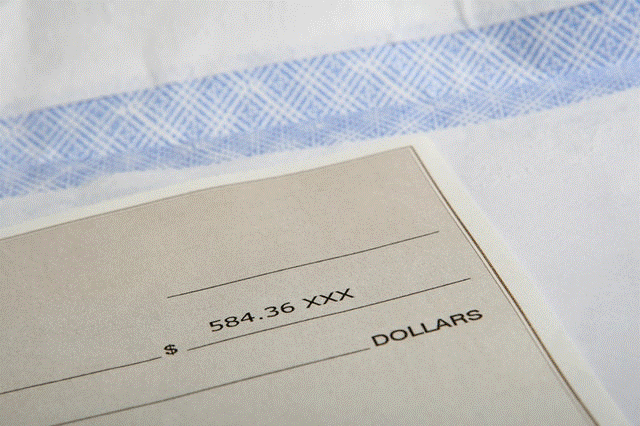
First, I’ll explain to you how to record a customer payment and deposit when a customer pays by check.
- Click the Quick Create (+)
- Select Receive Payment.
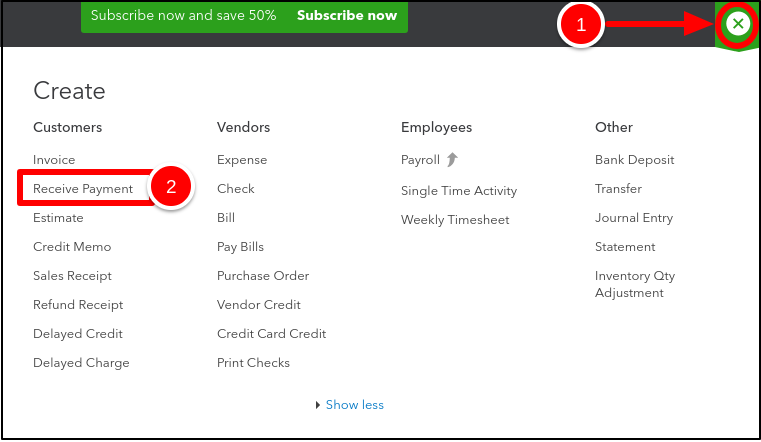
The Receive Payment window opens.
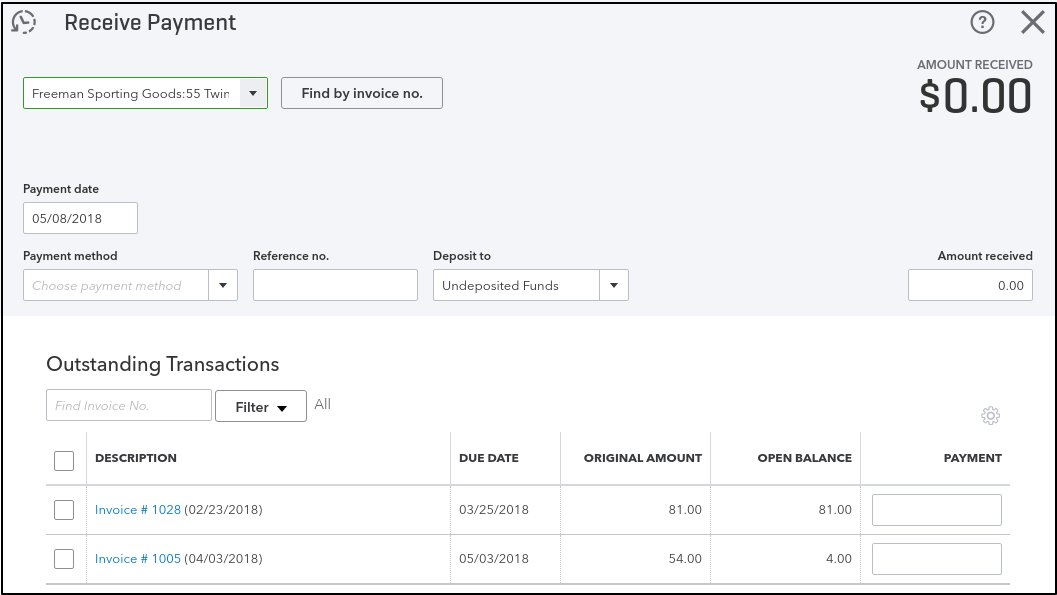
1. Enter the customer’s name or select it from the customer list.
2. Payment date – Enter the date you received the check (this date is important – make sure you enter the right date).
3. Payment method – Enter the payment method; for this example, we are using Check.
4. Reference No. – Enter the check number.
5. Deposit to – This is very important. I want you to select the account called “Undeposited Funds”. You’ll see why later.
6. Amount received – enter the amount of the check.

7. Make sure that the payment is applied to the correct customer invoices. Click and unclick the boxes as needed.
8. Amount to Apply – make sure that this amount equals to the amount of the check you received from your customer.
9. Click Save and Close or Save and New.
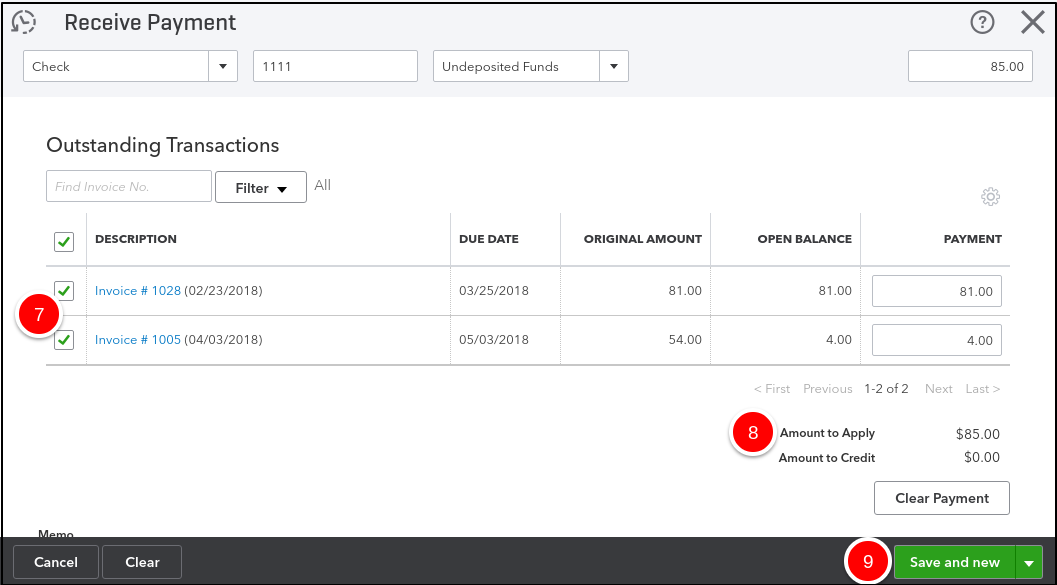
Enter each check as I just described. Remember – use “Undeposited Funds” as the Deposit To account.
[Bank feeds in just 5 minutes a day? No problem!
>>Click Here to claim the free cheat sheet]<<
Now, I’ll show you the next step.
How to enter a bank deposit in QuickBooks Online

The next step is to record a Bank Deposit in QBO. This step is not optional. Follow the instructions and you’ll see how easy it is to keep your QBO mistake-free.
At this point, I am assuming that you have received several checks from your customers and that you have entered them as Customer Payments. The next logical step is that you will deposit these checks at the bank. I am assuming that you will deposit several checks together with one deposit.
- Click on the Quick Create (+) menu.
- Select Bank Deposit.

The Deposit window opens.
Be sure to carefully follow my instructions. They are simple but very important.
- Select the bank account that you will deposit the checks to.
- Enter the date of the deposit – this is important – be sure it’s the date you deposited the checks.
- Click on the box next to the checks you will deposit from the “Select Existing Payments” section. Leave all the other information exactly as it is.
- Make sure that the total amount equals to the amount that you deposited at the bank – this is also very important.
- Click Save and Close or Save and New.
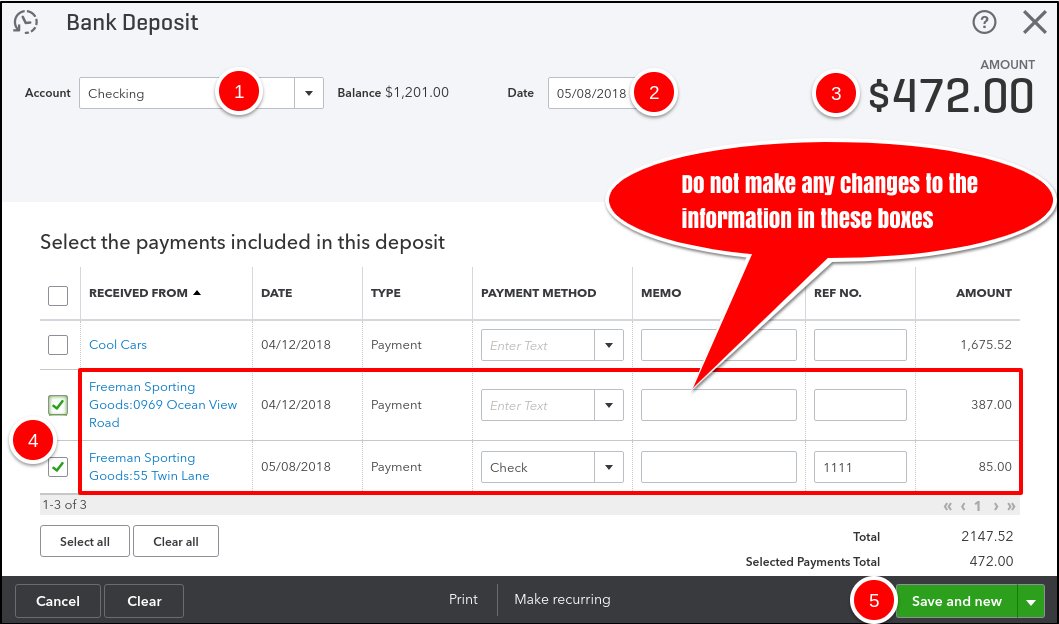
By following these specific steps, the deposit that you entered in QBO will match up to the amount you download from your bank.
How to enter customer payments received via electronic funds

I know you are probably asking yourself – who receives payments by check anymore? You may receive customer payments by electronic funds – wire transfers or ACH. I’ll show you how to enter those. They are super simple but you still should carefully follow these steps.
- Click on the Quick Create (+) menu.
- Select Receive Payment.

The Receive Payment window opens.
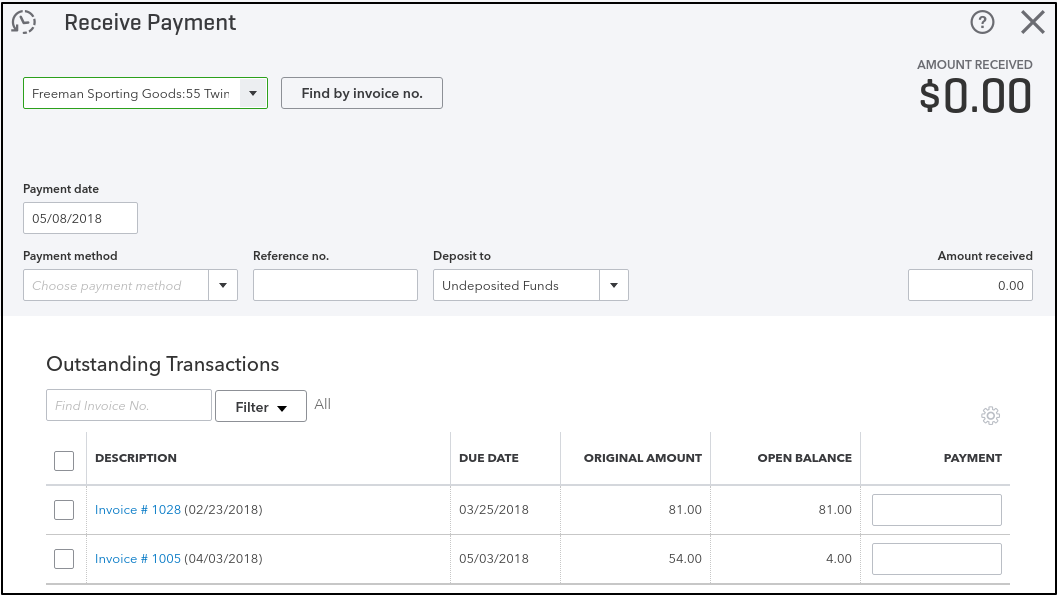
1. Enter the customer’s name or select it from the customer list.
2. Payment date – Enter the date you received the check (this date is important – make sure you enter the right date).
3. Payment method – Enter or add the payment method “EFT/ACH”.
4. Reference No. – Enter a reference number if you want to. This is not required.
5. Deposit to – This is very important. For electronic funds, I want you to select the bank account where the funds were received. In this case, we do not need to use the Undeposited Funds as I mentioned earlier.
6. Amount received – enter the amount of the ACH or wire transfer received. I am assuming that you received the full amount due from your customer. There will be a separate tutorial if you receive an amount less than the invoice amount.

In the Outstanding Transactions section:
7. Make sure that the payment is applied to the correct customer invoices. Click and unclick the boxes as needed.
8. Amount to Apply – make sure that this amount equals to the amount of the check you received from your customer.
9. Click Save and Close or Save and New.
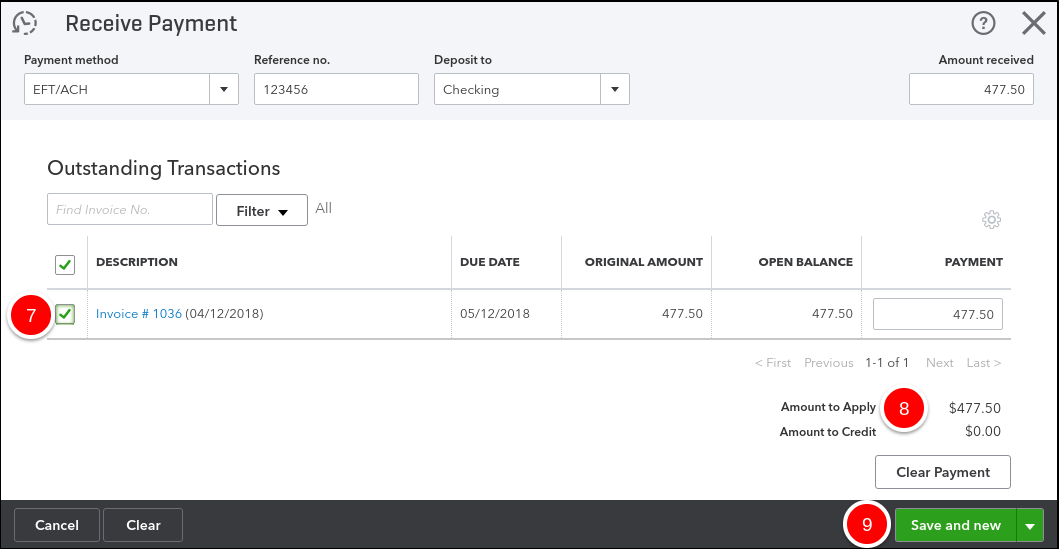
That’s all you need to do to enter a customer payment received electronically.
Do you have to do all this data entry?

Some of you may be wondering – why do you have to do all this data entry? Why can’t you just enter all these transactions from the Banking transactions window? [bctt tweet=”Keep in mind that QBO is a business software application. It’s not like Quicken.”] QuickBooks works in very specific ways and I have learned after training hundreds of business owners in QuickBooks that this is the best way to enter these transactions so that you can avoid all the mistakes that everyone else makes. Sometimes a little bit of data entry will prevent very costly mistakes.
Parting words
By sharing these tutorials with you, I am hoping that you will learn to avoid all the costly mistakes that everyone else makes. You’ll avoid a lot of grief and headaches if you learn how to enter customer payments and deposits in QuickBooks Online. Thanks for keeping up with our QBO tutorials and I hope that they are making a difference! Please share this content if you find it useful and subscribe to our blog to get the latest news on our tutorials and videos. Till next time!











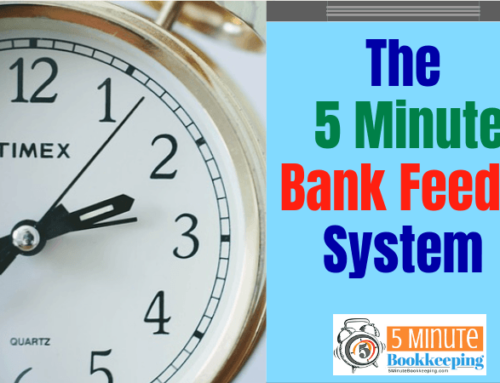
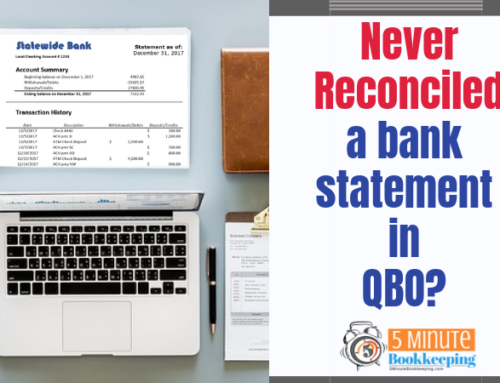
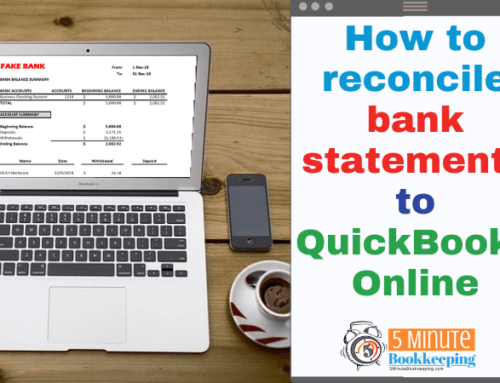




Thank you for you help. I am new to Quickbooks online. I did prefer the Desktop version and am trying to learn Quikcbooks Online
Thanks so much! Bookmarking your site for reference!
Really Appreciated…Thanks
Thanks for writing again, I have a little confusing about the undeposited fund. When we received invoice payment why it goes under undeposited fund?
Can you please explain in more detail or share with me a video of this reason
Thanks
Hello,
Undeposited funds are for when customer payments (usually checks) have been physically received, but not deposited to a bank account. Let’s say you received a payment from a customer, but you took the check to the bank only 3 days later. For those 3 days, the payment would belong in Undeposited Funds.
Also, sometimes you may receive multiple checks for multiple customer invoices, but you deposit all the checks as one deposit. For this, you would need to use the Undeposited Funds account in QBO to make sure that one deposit was recorded for multiple customer payments.
I hope this helps.